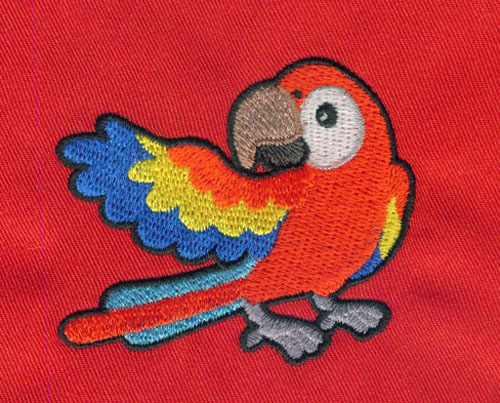The Art of Tracing: Secrets of Professional Vectorization
Vectorization is a transformative process that converts raster images, made up of pixels, into clean, scalable vector graphics composed of mathematical paths. It's a crucial technique in the world of design and graphics, enabling artists and professionals to create images that are infinitely resizable without losing quality. The heart of vectorization lies in tracing—manually tracing over the elements of a raster image to create vector paths. In this comprehensive guide, we'll delve into the art of tracing and unveil the secrets of professional vectorization, from the tools you need to the techniques that will elevate your vector art to a whole new level.
Understanding Vectorization and Tracing
Before we dive into the art of tracing, let's establish a solid foundation by understanding the key concepts:
Vector Graphics vs. Raster Images
● Raster Images: These images, including formats like JPEG, PNG, and BMP, are made up
of pixels. They're resolution-dependent, which means they can lose quality when
scaled up.
● Vector Graphics: Comprising mathematical paths (lines, curves, and shapes), vector graphics are resolution-independent. Formats like SVG, AI, and EPS are used for vector images, allowing them to be scaled infinitely without quality loss.
Vectorization
● Vectorization is the process of converting raster images into vector graphics. It's a crucial technique in graphic design, illustration, and various other fields.
Tracing
● Tracing is the core of vectorization. It involves manually creating vector paths over elements in a raster image, capturing shapes, colors, and details.
Why Tracing Matters
Tracing is an indispensable skill in vectorization because it allows you to:
Preserve Details
● Tracing enables you to preserve intricate details, ensuring that the vectorized image remains faithful to the original.
Achieve Precision
● Tracing provides greater control and precision when converting complex images into vector format.
Customize Elements
● Tracing allows you to make creative decisions during the vectorization process, enhancing and customizing the image as needed.
The Secrets of Professional Tracing
Now, let's unlock the secrets of professional tracing techniques that will take your vectorization skills to the next level:
Use the Right Tools
● Vector Software: Utilize vector graphics software like Adobe Illustrator, CorelDRAW, or Inkscape for the tracing process. These tools offer a range of features and customization options.
● Graphics Tablet: A graphics tablet with a stylus provides precision and control that a mouse may lack, making it an invaluable tool for professional tracing.
Select the Appropriate Technique
● Pen Tool Mastery: The Pen Tool is the go-to tool for tracing in vector software. Mastering it is essential for precise tracing. Learn how to create anchor points and bezier curves with finesse.
● Brush and Pencil Tools: In some cases, using brush or pencil tools may be more suitable, especially for freehand tracing or replicating hand-drawn elements.
Break It Down Into Layers
● Divide complex images into layers. Trace each element on a separate layer, allowing you to manage and edit them individually.
Zoom and Grids
● Zoom in on the image to work on intricate details. Enable grids or guides to maintain alignment and symmetry in your vector paths.
Be Mindful of Strokes and Fills
● Pay attention to the type of path you're creating. Use strokes for outlines and fills for solid shapes. Adjust stroke weights and fill colors accordingly.
Be Patient and Precise
● Tracing is a meticulous process that requires patience. Take your time to create precise paths, ensuring that curves are smooth and angles are accurate.
Pay Attention to Curvature
Handles
● Handle bezier curve handles with care. Adjust them to control the direction and curvature of your paths effectively.
Simplify Where Necessary
● In some cases, simplify complex elements to reduce the number of anchor points. This can help maintain the vector file's performance.
Practice Regularly
● Tracing is an art, and like any art, it requires practice to master. Dedicate time to tracing different types of images to refine your skills.
Professional Vectorization Tips
While tracing is a significant part of vectorization, achieving professional results involves more than just the tracing process:
Layer Management
● Keep your vector files organized by using layers effectively. This makes it easier to edit and manage different elements of your vector artwork.
Color Harmony
● Pay attention to color choices and harmony in your vector art. Use color palettes that evoke the desired emotions and aesthetics.
Texture and Effects
● Experiment with textures and effects to add depth and realism to your vector illustrations. Techniques like gradient mesh can be powerful tools.
Scalability
● Test the scalability of your vector artwork to ensure that it maintains quality at different sizes. This is a fundamental advantage of vector graphics.
Composition
● Study principles of design and composition to create visually appealing vector art. Balance, contrast, and focal points play a significant role.
Professional Vectorization in Practice
Let's explore some real-world examples of professional vectorization:
Logo Design
Professional logo designers often start with hand-drawn sketches or raster concepts. Tracing these sketches into vectors allows for scalability and customization.
Vector Portraits
Creating detailed vector portraits from photographs requires expert tracing skills to capture facial features, shadows, and highlights.
Technical Illustrations
In fields like engineering and architecture, precise technical illustrations are essential. Tracing raster images into accurate vectors is a common practice.
Art Reproduction
Artists may vectorize their hand-drawn or painted artwork to create prints, posters, or digital versions, maintaining the original's quality.
Conclusion
The art of tracing is a fundamental skill in
the world of vectorization. It empowers designers and artists to breathe life
into raster images, converting them into versatile vector graphics. By using
the right tools, mastering tracing techniques, and following professional
vectorization tips, you can elevate your vectorart to a whole new level of precision and creativity. Whether you're creating
logos, technical illustrations, or vector portraits, the secrets of professional
tracing will be your key to success in the world of vector graphics. So, grab
your stylus, open your vector software, and embark on a journey to unlock the
full potential of vectorization through the art of tracing.


